
Surgery
Tumor Markers
Dr. Aqeel Shakir
Lec. 5
What are tumor markers?
Tumor markers are substances that are produced by cancer cells or by other
cells of the body in response to cancer or certain benign (noncancerous)
conditions.
Most tumor markers are made by normal cells as well as by cancer cells;
however, they are produced at much higher levels in cancerous conditions.
These substances can be found in the blood, urine, stool, tumor tissue, or
other tissues or bodily fluids of some patients with cancer.
Most tumor markers are proteins. However, more recently, patterns of gene
expression and changes to DNA have also begun to be used as tumor
markers. Markers of the latter type are assessed in tumor tissue specifically.
Thus far, more than 20 different tumor markers have been characterized and
are in clinical use.
Some are associated with only one type of cancer, whereas others are
associated with two or more cancer types.

Surgery
Tumor Markers
Dr. Aqeel Shakir
Lec. 5
How are tumor markers used in cancer care?
Tumor markers are used to help detect, diagnose, and manage some types of
cancer. Although an elevated level of a tumor marker may suggest the
presence of cancer, this alone is not enough to diagnose cancer.
Therefore, measurements of tumor markers are usually combined with other
tests, such as biopsies, to diagnose cancer.
Tumor marker levels may be measured before treatment to help doctors plan
the appropriate therapy.
In some types of cancer, the level of a tumor marker reflects the stage
(extent) of the disease and/or the patient’s prognosis (likely outcome or
course of disease).
Tumor markers may also be measured periodically during cancer therapy. A
decrease in the level of a tumor marker or a return to the marker’s normal
level may indicate that the cancer is responding to treatment, whereas no
change or an increase may indicate that the cancer is not responding.
Tumor markers may also be measured after treatment has ended to check for
recurrence (the return of cancer).
How are tumor markers measured?
A doctor takes a sample of tumor tissue or bodily fluid and sends it to a
laboratory, where various methods are used to measure the level of the
tumor marker.
If the tumor marker is being used to determine whether treatment is working
or whether there is a recurrence, the marker’s level will be measured in
multiple samples taken over time. Usually these “serial measurements,”
which show whether the level of a marker is increasing, staying the same, or
decreasing, are more meaningful than a single measurement.
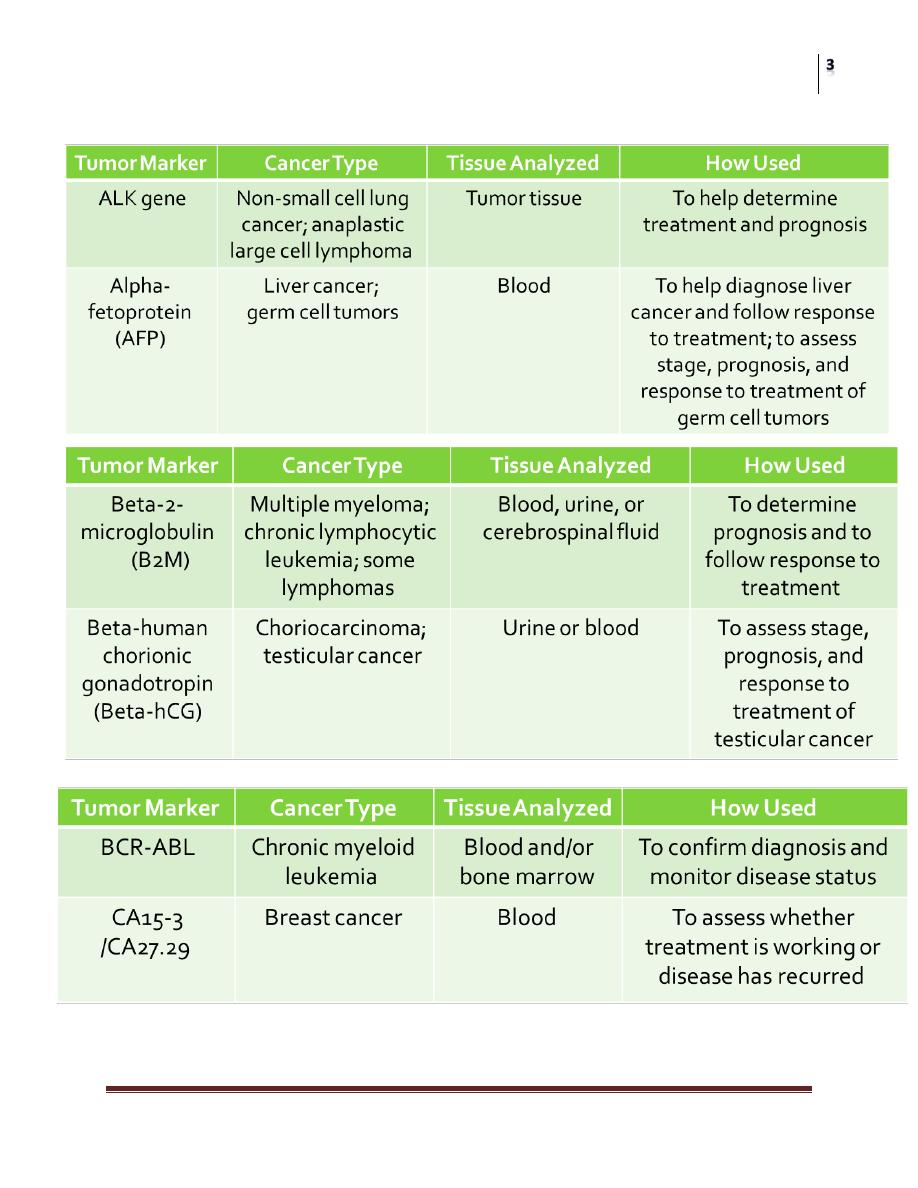
Surgery
Tumor Markers
Dr. Aqeel Shakir
Lec. 5
What tumor markers are currently being used, and for which cancer types?
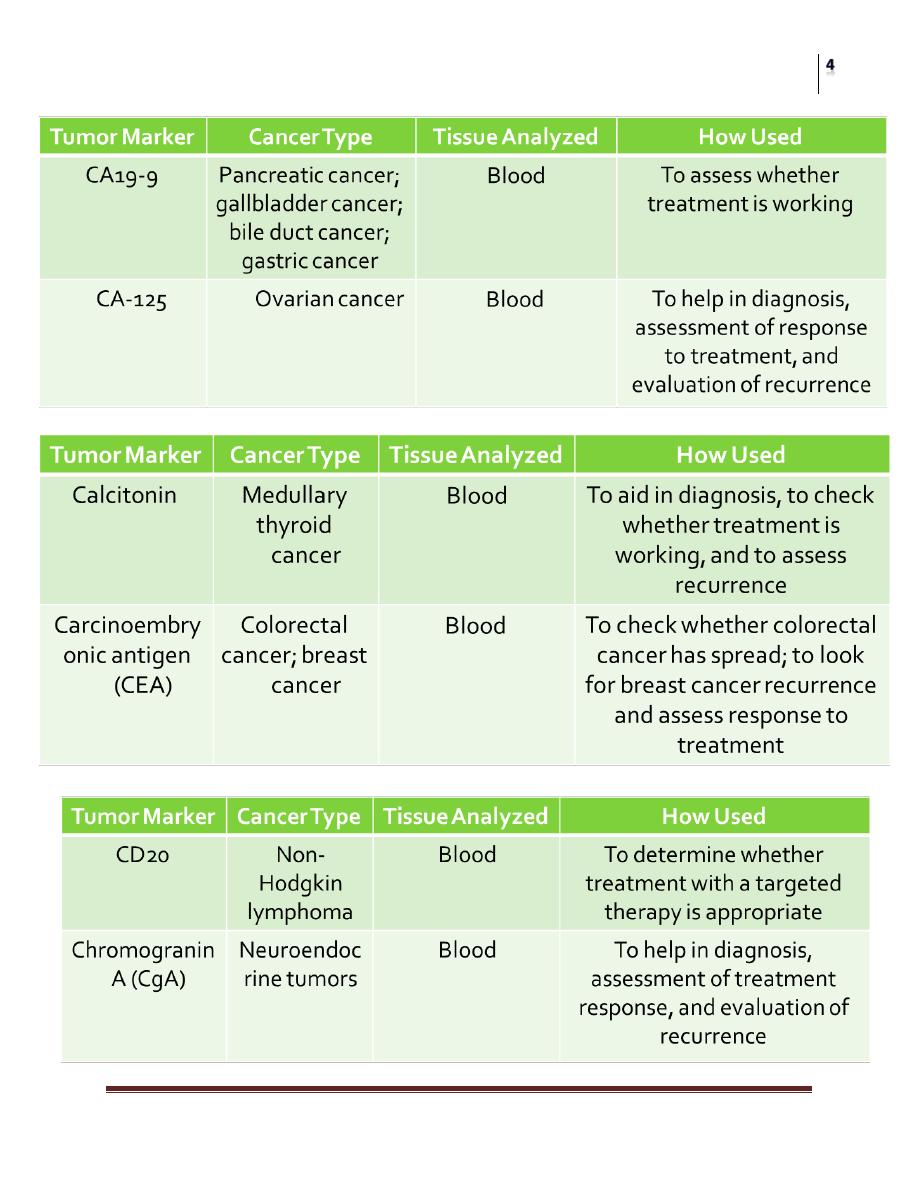
Surgery
Tumor Markers
Dr. Aqeel Shakir
Lec. 5
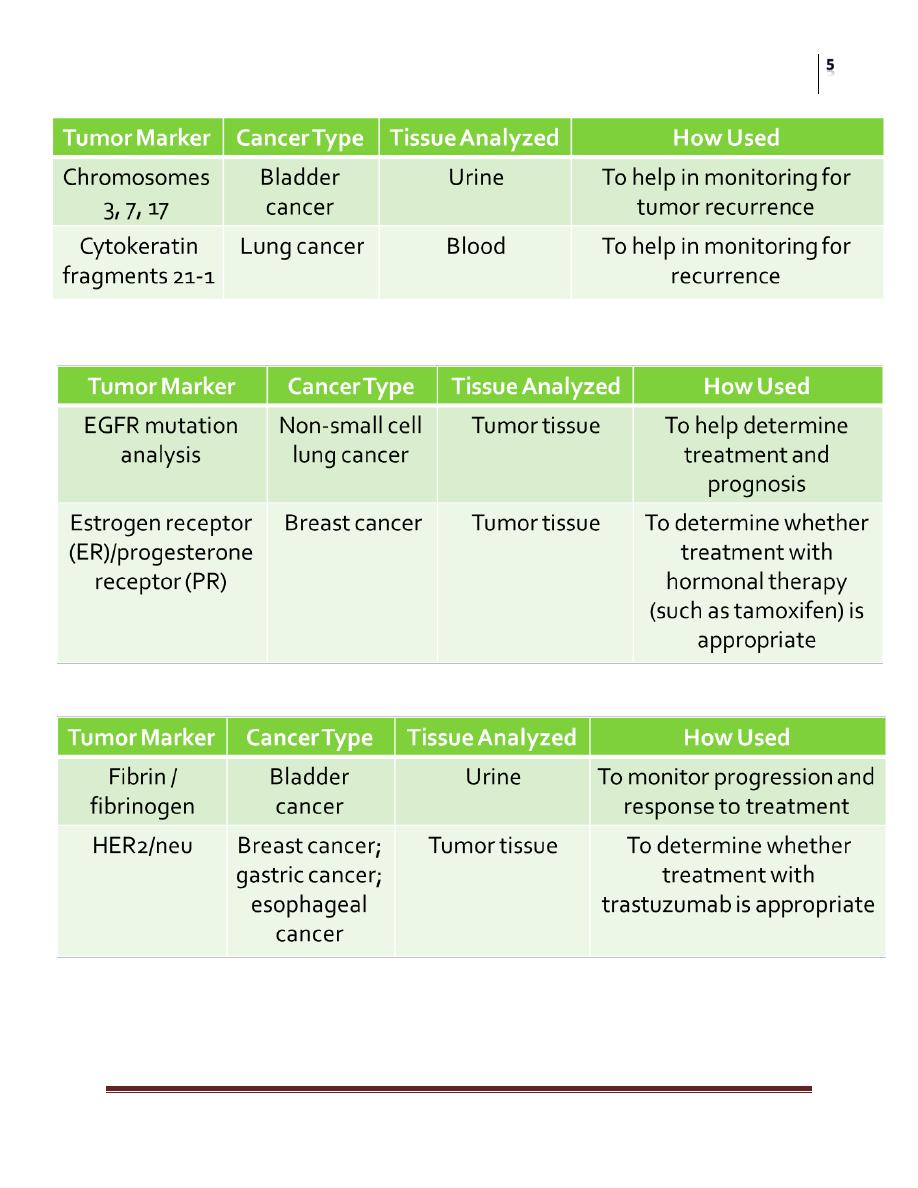
Surgery
Tumor Markers
Dr. Aqeel Shakir
Lec. 5
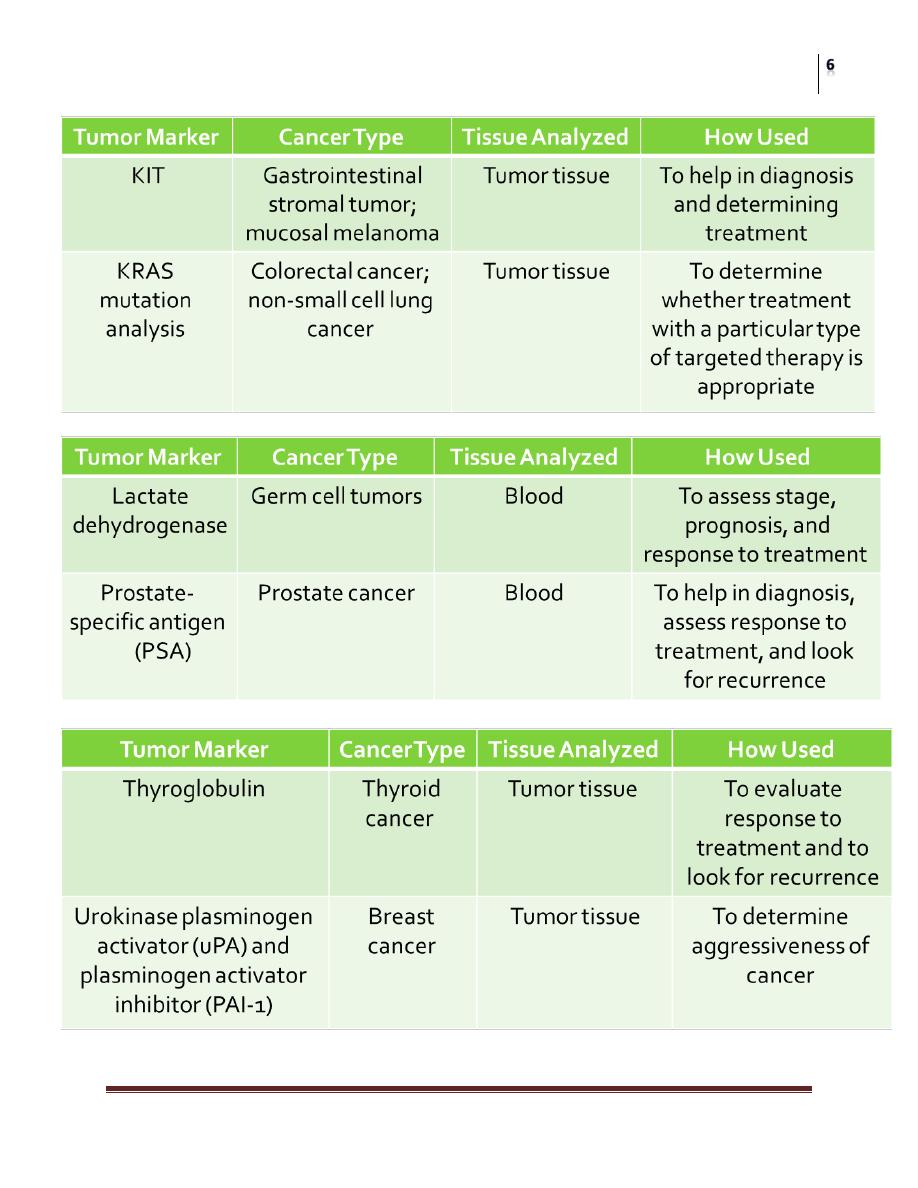
Surgery
Tumor Markers
Dr. Aqeel Shakir
Lec. 5
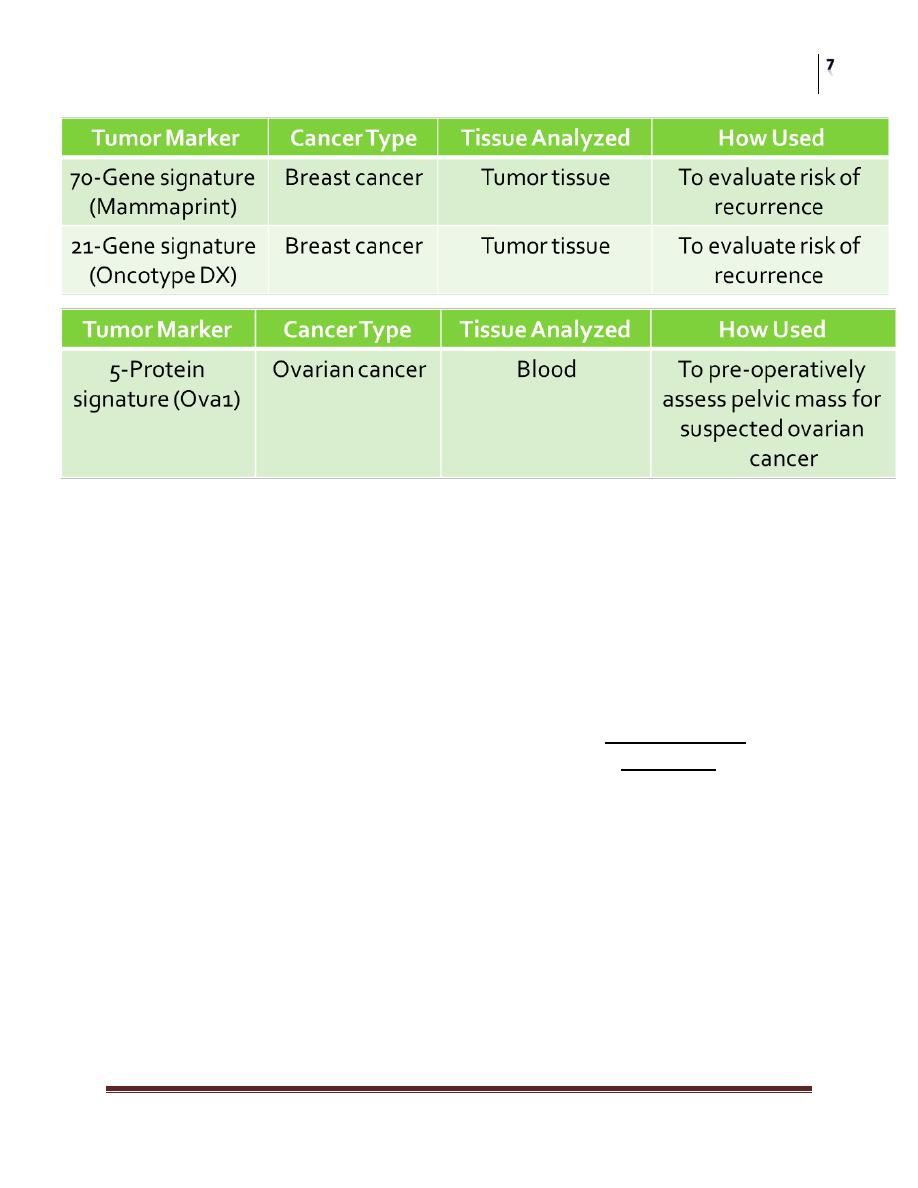
Surgery
Tumor Markers
Dr. Aqeel Shakir
Lec. 5
Can tumor markers be used in cancer screening?
Because tumor markers can be used to assess the response of a tumor to
treatment and for prognosis.
Researchers have hoped that they might also be useful in screening tests that
aim to detect cancer early, before there are any symptoms.
For a screening test to be useful, it should have very high sensitivity (ability
to correctly identify people who have the disease) and specificity (ability to
correctly identify people who do not have the disease).
If a test is highly sensitive, it will identify most people with the disease that
is; it will result in very few false-negative results.
If a test is highly specific, only a small number of people will test positive
for the disease who do not have it—in other words, it will result in very few
false-positive results.

Surgery
Tumor Markers
Dr. Aqeel Shakir
Lec. 5
Breast cancer
CA15-3/CA27.29
Estrogen receptor (ER)/progesterone receptor (PR)
HER2/neu
70-Gene signature (Mammaprint)
21-Gene signature (Oncotype DX)
5-Protein signature (Ova1)
Colorectal cancer;
KRAS mutation analysis
Carcinoembryonic antigen (CEA)
T
he
E
nd
